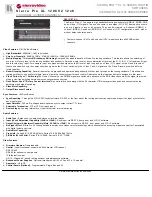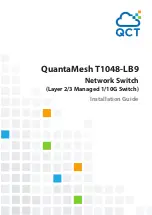
GE Reason Switches
Chapter 4
– Functions
REASON SWITCHES-TM-EN-3
53
4
Aggregation
Link Aggregation function was standardized by the IEEE 802.3ad. The purpose of the
function is to increase the performance and the availability of network devices with a
double connection, making parallel links work as if they were a single high
performance link. This function is also known as Port Trunking or Port Bundling. The
main benefits of using link aggregation are:
Increase link capacity:
o
Incremental capacity;
o
Load balance on links.
Increase link availability, by creating redundant paths between two devices.
Care must be taken when using the term ‘Trunking’. Trunking can refer to Trunk port (RSTP protocol), which forwards
data of many VLAN-tagged frames or, in this context, to backbone connections. This manual uses the term
‘Aggregated-link’ when referring to links operating in aggregation.
Nowadays, link speed generally is not the major difficulty when upgrading a LAN. As
network devices are getting less expensive, upgrading the devices to a higher speed
device is generally possible. Besides, when it comes to redundancy, the aggregation
function can have grate benefits to a given connection between two stations. As the
behavior of two links will be as if they are one, there will be redundancy in the
connection between these stations. If one of the links fails, network speed will
decreased, but it will continue operating.
When using this function, it is important to know that layer 2 features, such as VLANs,
STP protocol or CoS operations will operate as if aggregated links were just one port.
Thus, the physical loop created when connecting two bridges together will not be
detected by the STP protocol, as the aggregation function will logically merge the
ports.
The figure below shows an example of the link aggregation between two network
devices, and the behavior of the protocol when there is an aggregated link failure.
Figure 10: Comparison between common and aggregated links speed
Summary of Contents for T1000
Page 2: ......
Page 11: ...Figure 97 T1000 dimensions 298 Figure 98 S2020 and S2024G dimensions 299...
Page 12: ......
Page 41: ...Chapter 3 Hardware Design GE Reason Switches REASON SWITCHES TM EN 3 41 Figure 4 S2024G Switch...
Page 256: ......
Page 274: ......
















































